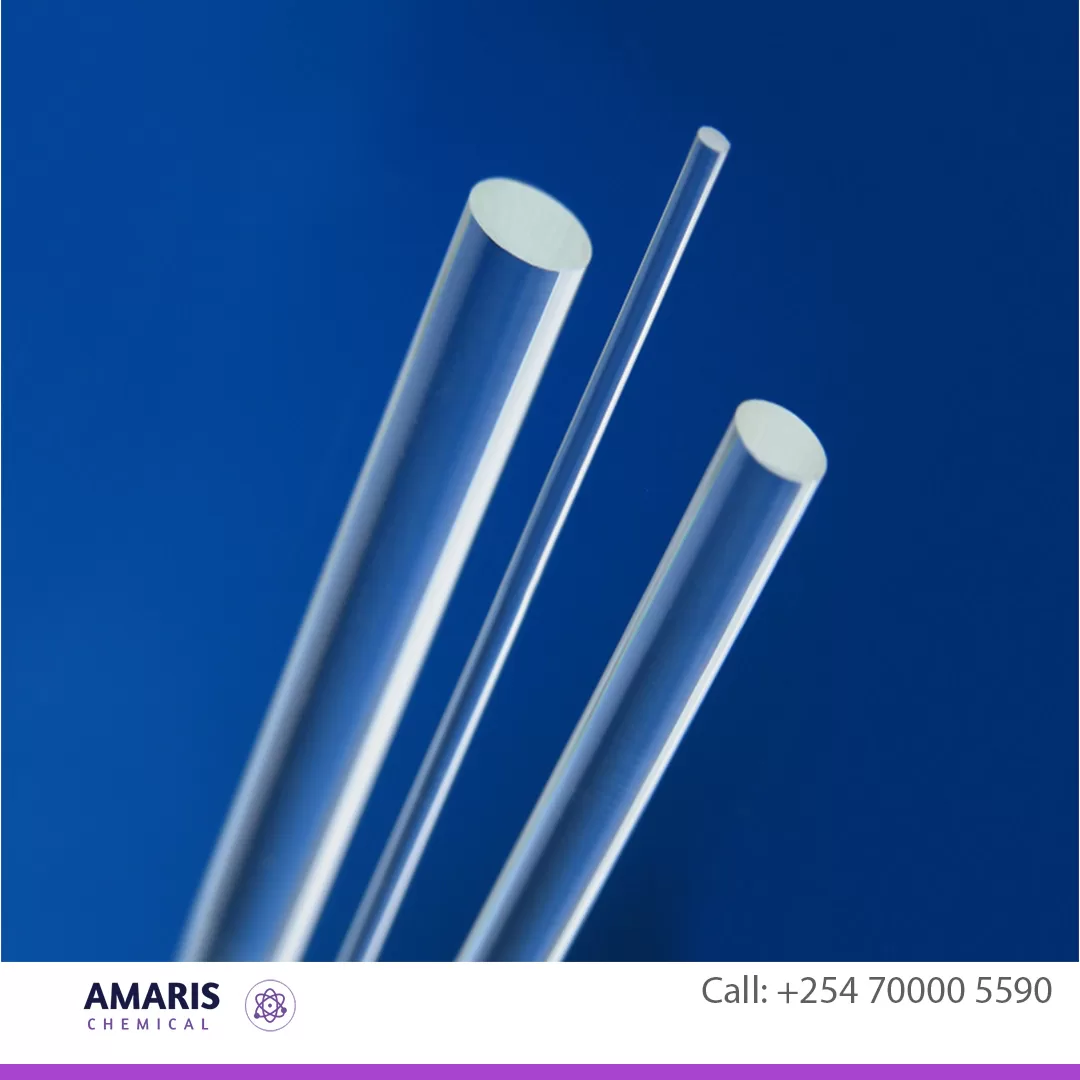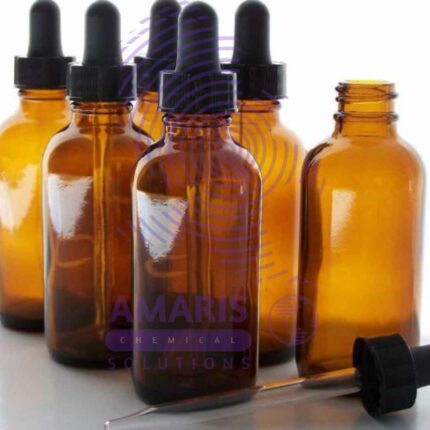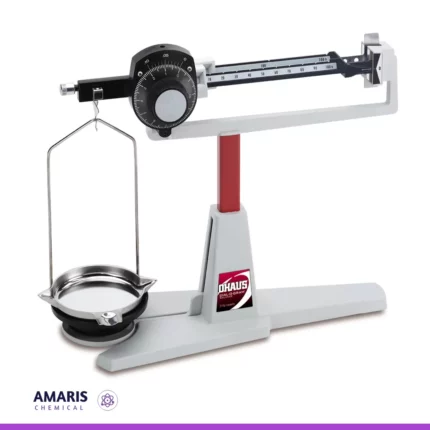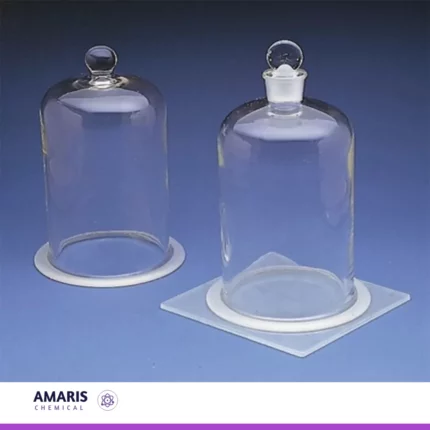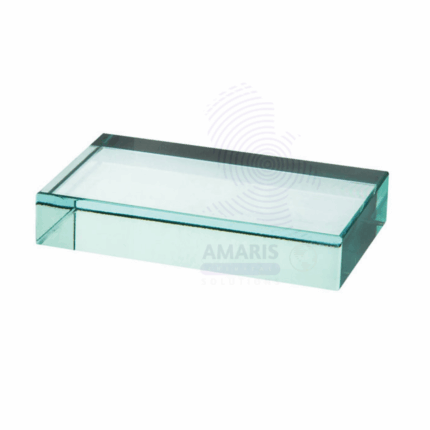
Rectangular Glass Block
$500.00 Original price was: $500.00.$400.00Current price is: $400.00.
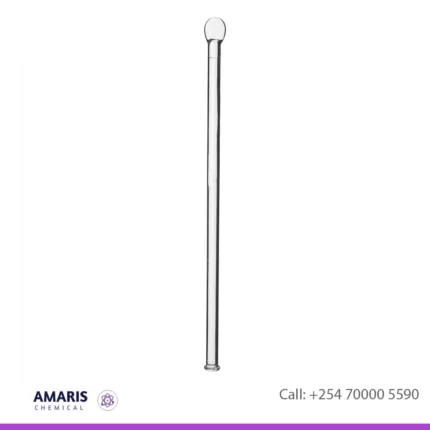
Glass Stirring Rod
$500.00 Original price was: $500.00.$450.00Current price is: $450.00.
Glass Rod for Static Electricity
$0.01
Whatsapp Order
A glass rod is a common tool used in physics experiments to demonstrate static electricity. Here’s how you can use a glass rod to generate static electricity and some of the principles behind it:
Materials Needed:
- Glass rod
- Silk cloth or piece of fur
- Neutral objects (e.g., small pieces of paper, aluminum foil, or a pith ball electroscope)
Steps to Generate Static Electricity:
- Preparation: Make sure the glass rod and the silk cloth are clean and dry. Moisture can hinder the process of generating static electricity.
- Rubbing the Glass Rod: Firmly rub the glass rod with the silk cloth or fur. This action transfers electrons from the glass rod to the silk cloth, leaving the glass rod positively charged due to the loss of electrons.
- Observation: Bring the positively charged glass rod close to neutral objects like small pieces of paper or an electroscope. You should observe the objects being attracted to the rod or the electroscope showing a deflection. This occurs because the neutral objects become polarized; the side closer to the rod becomes negatively charged, and the side further away becomes positively charged.
SKU:
ACS81737CHEM0
Category: LABORATORY EQUIPMENT & APPARATUS
Description
Table of Contents
ToggleUses of glass rod
1. Electrostatic Induction Demonstrations:
- Pith Ball Electroscope: When a charged glass rod is brought near a neutral pith ball electroscope, it can induce a charge in the pith ball, causing it to be attracted to the rod. This demonstrates the principles of electrostatic induction and the behavior of charges.
- Foil Electroscope: A glass rod can be used to show the deflection of foil leaves in an electroscope, indicating the presence of static charge and its magnitude.
2. Charge Transfer Experiments:
- Triboelectric Effect: By rubbing the glass rod with silk or fur, students can observe the transfer of electrons between materials, leading to an understanding of the triboelectric series and how different materials interact to produce static charges.
- Charging by Contact: A glass rod can be used to directly transfer charge to a conductive object by touching it, allowing students to see how objects can be charged by contact.
3. Coulomb’s Law Experiments:
- Measuring Electrostatic Force: By bringing a charged glass rod near another charged object, students can observe the repulsion or attraction forces, which can be used to study Coulomb’s law and the relationship between charge, distance, and force.
4. Polarization Demonstrations:
- Attraction of Neutral Objects: A charged glass rod can attract small neutral objects like paper bits or balloons, demonstrating the concept of charge polarization and the movement of electrons within a neutral object in response to an external charge.
5. Electric Field Mapping:
- Field Line Visualization: Using a charged glass rod, students can map the electric field lines by using small conductive test objects or light particles suspended in oil. This helps in visualizing how electric fields emanate from charged objects and the direction of force experienced by a positive test charge.
6. Capacitor Experiments:
- Charging and Discharging Capacitors: A glass rod can be used to charge a capacitor by transferring static electricity. This demonstrates how capacitors store and release electric charge and the concept of capacitance.
7. Static Electricity Applications:
- Precipitators and Dust Removal: Demonstrating the principle behind electrostatic precipitators, which use static charges to remove particles from the air. A charged glass rod can attract dust particles, illustrating how industrial electrostatic precipitators work.
8. Comparison of Material Properties:
- Testing Different Materials: By comparing the effects of rubbing different materials (other than silk) against the glass rod, students can explore the triboelectric series and understand which materials tend to gain or lose electrons more readily.
9. Electrostatic Painting:
- Simulating Industrial Processes: Using a charged glass rod to attract small particles to a surface can simulate the principles behind electrostatic painting, where charged paint particles are attracted to a surface, ensuring an even coat.
Related products
Amber Bottles Polystop
$0.01
A laboratory glass amber bottle is a specialized container commonly used in laboratories to store and protect light-sensitive substances, chemicals, or solutions. These bottles are made from amber-colored glass, which provides protection against ultraviolet (UV) and visible light radiation. The amber glass helps to minimize the degradation and decomposition of light-sensitive contents by blocking a significant portion of the light spectrum.
The amber color of the glass is achieved by adding iron, sulfur, and other compounds during the glass manufacturing process. This coloration is what gives the bottles their distinctive amber or brown appearance.
Laboratory glass amber bottles typically come in various sizes, ranging from small volumes of a few milliliters to large capacities of several liters. They often have a screw-on or snap-on cap, providing a secure and airtight seal to prevent spills, evaporation, and contamination.
Due to their ability to protect light-sensitive substances, laboratory glass amber bottles are widely used in chemistry, biology, pharmaceuticals, and other scientific fields where sample integrity and stability are crucial.
Barlows wheel apparatus
$0.01
The Barlow's wheel apparatus is an experimental device used to demonstrate the conversion of electrical energy into mechanical energy through electromagnetic principles. It consists of a horizontal wheel or disk with radial metal spokes attached to its center. The wheel is mounted on an axle, allowing it to rotate freely.
bell in vacuum with air pump with plate
$0.01
A "bell in vacuum" apparatus is a scientific setup used to demonstrate the effects of reduced air pressure (vacuum) on sound transmission. It typically consists of a bell or sound-producing object enclosed within a sealed chamber from which air has been removed, creating a low-pressure environment. This apparatus is designed to illustrate how sound travels differently in a vacuum compared to in normal atmospheric conditions, highlighting the role of air molecules in sound propagation.
Bell Jar with knob
$0.01
The best definition of a bell jar apparatus is a scientific instrument used in laboratories to create a controlled environment for various experimental purposes, such as studying the behavior of gases, conducting vacuum experiments, or demonstrating principles of physics and chemistry. It consists of a glass or transparent plastic container shaped like a bell, which can be sealed to create a vacuum chamber. The apparatus allows researchers to manipulate and observe the interactions of substances or objects within the vacuum or controlled atmosphere, often enabling investigations that wouldn't be possible under standard atmospheric conditions.
Bernoulli Tube Apparatus
$0.01
The Bernoulli tube apparatus, also known as a Venturi tube apparatus, is a scientific device used to demonstrate the principles of fluid dynamics, particularly the Bernoulli's principle. It consists of a specially shaped tube with a constricted region, often referred to as a Venturi section. When fluid (liquid or gas) flows through the tube, the constricted section leads to changes in pressure and velocity according to Bernoulli's principle, which states that as the velocity of a fluid increases, its pressure decreases and vice versa. This apparatus is commonly used in educational settings to visually illustrate how the flow of a fluid can affect its pressure, helping to explain various phenomena like lift in aircraft wings, fluid flow through pipes, and more.
Blotting paper
$0.01
Blotting paper is a highly absorbent and thin sheet of paper, typically made from materials like cotton, linen, or other plant fibers. It is designed to quickly absorb excess liquids, such as ink, oil, or moisture, from various surfaces without smudging or smearing the substances. Blotting paper is commonly used to remove excess ink from a freshly written page, absorb oil from the skin without disturbing makeup, or dry wet items. It is often found in office settings, art studios, and cosmetic applications due to its efficient absorption properties.


 Emollients
Emollients Humectants
Humectants UV Filters
UV Filters Surfactants (cosmetic)
Surfactants (cosmetic) Preservatives (cosmetic)
Preservatives (cosmetic) Fragrances and Essential Oils
Fragrances and Essential Oils Antioxidants (cosmetics)
Antioxidants (cosmetics)
 Solvents (lab)
Solvents (lab) Chromatography Chemicals
Chromatography Chemicals Microbiology and Cell Culture Reagents
Microbiology and Cell Culture Reagents Biochemical Reagents
Biochemical Reagents Inorganic and Organic Standards
Inorganic and Organic Standards Spectroscopy Reagents
Spectroscopy Reagents Molecular Biology Reagents
Molecular Biology Reagents
 Precious Metal Extraction Agents
Precious Metal Extraction Agents
 Plasticizers
Plasticizers Polymerization Initiators
Polymerization Initiators Stabilizers
Stabilizers Monomers
Monomers Fillers and Reinforcements
Fillers and Reinforcements Antioxidants (plastics)
Antioxidants (plastics) Colorants (plastic pigments,Dyes)
Colorants (plastic pigments,Dyes)
 Fertilizers
Fertilizers Plant Growth Regulators
Plant Growth Regulators Soil Conditioners
Soil Conditioners Animal Feed Additives
Animal Feed Additives Biostimulants
Biostimulants
 Dough Conditioners
Dough Conditioners Flour Treatments
Flour Treatments Fat Replacers
Fat Replacers Preservatives (baking)
Preservatives (baking)
 Surfactants (cleaning)
Surfactants (cleaning) Builders
Builders Bleaching Agents
Bleaching Agents Enzymes
Enzymes Solvents (cleaning)
Solvents (cleaning) Fragrances
Fragrances Disinfectant
Disinfectant Metal cleaning
Metal cleaning
 Binders/Resins
Binders/Resins Pigments
Pigments Solvents (paint)
Solvents (paint) Additives
Additives Driers
Driers Anti-Corrosion Agents
Anti-Corrosion Agents Specialty Coatings
Specialty Coatings Functional Coatings
Functional Coatings Application-Specific Coatings
Application-Specific Coatings
 Sealants and Adhesives
Sealants and Adhesives
 Biodegradable Surfactants
Biodegradable Surfactants Bio-based Solvents
Bio-based Solvents Renewable Polymers
Renewable Polymers Carbon Capture Chemicals
Carbon Capture Chemicals Wastewater Treatment Chemicals
Wastewater Treatment Chemicals
 Preservatives (food)
Preservatives (food) Flavor Enhancers
Flavor Enhancers Acidulants
Acidulants Sweeteners
Sweeteners Emulsifiers
Emulsifiers Antioxidants (food)
Antioxidants (food) Colorants (food)
Colorants (food) Nutrient Supplements
Nutrient Supplements Nutraceutical Ingredients
Nutraceutical Ingredients
 Fresh Herbs
Fresh Herbs Whole Spices
Whole Spices Ground Spices
Ground Spices Spice Blends
Spice Blends
 Surfactants(oil)
Surfactants(oil)
 Antibiotics
Antibiotics Active Pharmaceutical Ingredients
Active Pharmaceutical Ingredients Excipients
Excipients Vaccine Adjuvants
Vaccine Adjuvants Nutraceutical Ingredients
Nutraceutical Ingredients Solvents (pharmaceutical)
Solvents (pharmaceutical)
 Automotive chemicals
Automotive chemicals Pyrotechnic Chemicals
Pyrotechnic Chemicals


 Vulcanizing Agents
Vulcanizing Agents Accelerators & Retarders
Accelerators & Retarders Antidegradants
Antidegradants Reinforcing Agents
Reinforcing Agents Plasticizers & Softeners
Plasticizers & Softeners Fillers & Extenders
Fillers & Extenders Blowing Agents
Blowing Agents Adhesion Promoters
Adhesion Promoters

